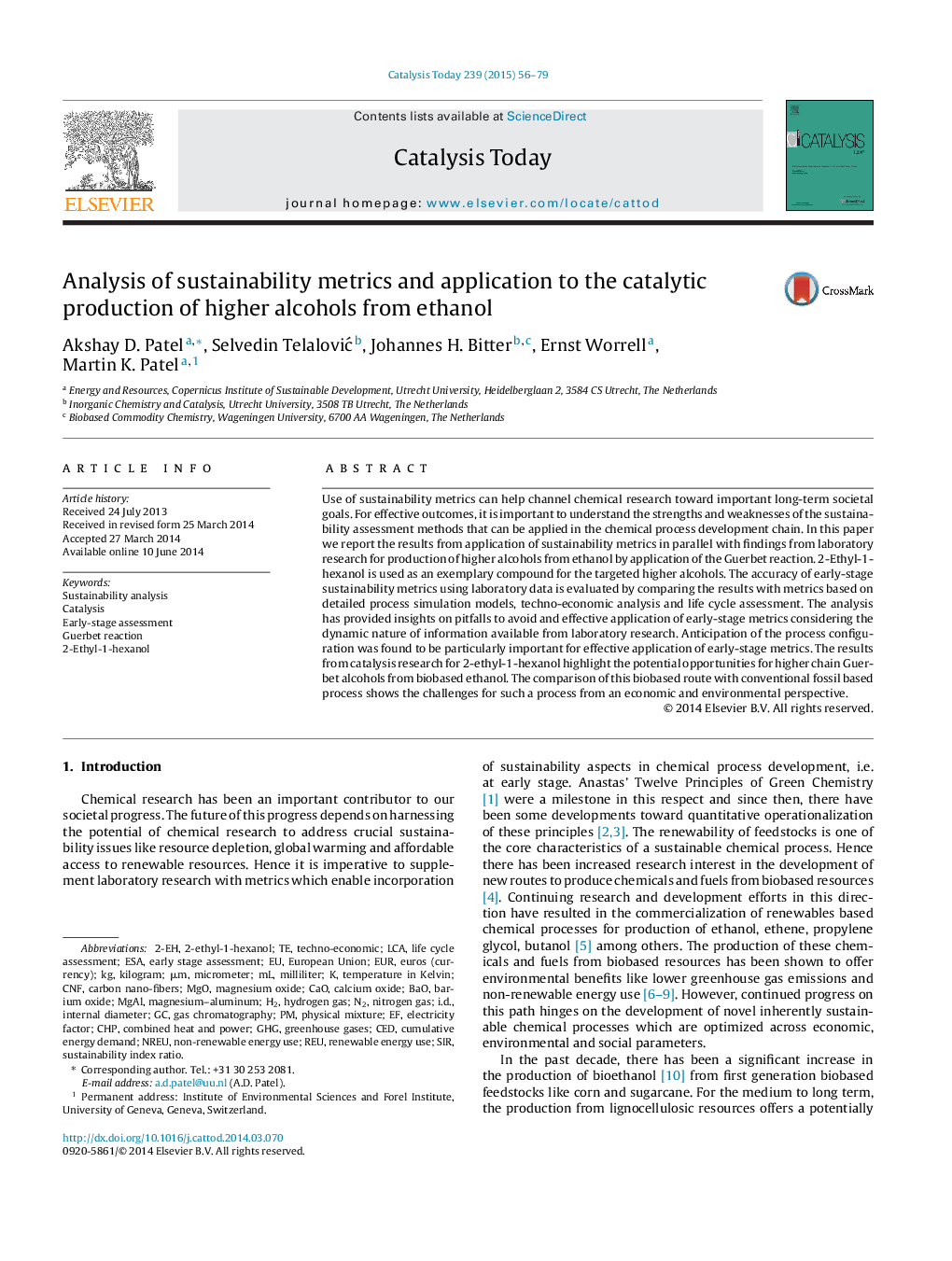| Article ID | Journal | Published Year | Pages | File Type |
|---|---|---|---|---|
| 54001 | Catalysis Today | 2015 | 24 Pages |
•We present laboratory results on catalyst development for Guerbet alcohols.•We analyze the application of an early-stage sustainability assessment methodology.•The approach of implementing the methodology determines the accuracy of the outcome.
Use of sustainability metrics can help channel chemical research toward important long-term societal goals. For effective outcomes, it is important to understand the strengths and weaknesses of the sustainability assessment methods that can be applied in the chemical process development chain. In this paper we report the results from application of sustainability metrics in parallel with findings from laboratory research for production of higher alcohols from ethanol by application of the Guerbet reaction. 2-Ethyl-1-hexanol is used as an exemplary compound for the targeted higher alcohols. The accuracy of early-stage sustainability metrics using laboratory data is evaluated by comparing the results with metrics based on detailed process simulation models, techno-economic analysis and life cycle assessment. The analysis has provided insights on pitfalls to avoid and effective application of early-stage metrics considering the dynamic nature of information available from laboratory research. Anticipation of the process configuration was found to be particularly important for effective application of early-stage metrics. The results from catalysis research for 2-ethyl-1-hexanol highlight the potential opportunities for higher chain Guerbet alcohols from biobased ethanol. The comparison of this biobased route with conventional fossil based process shows the challenges for such a process from an economic and environmental perspective.
Graphical abstractFigure optionsDownload full-size imageDownload high-quality image (170 K)Download as PowerPoint slide
